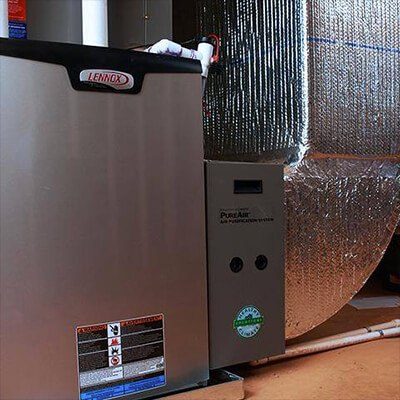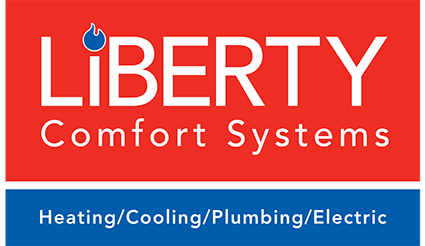
Both oil- and gas-powered furnaces provide comfortable heat for your home if they are well maintained. These systems both heat air and blow it through the ductwork into registers in the rooms of your home, which keeps them warm during the winter. Return vents pull cooled air back to the furnace, where pollutants are filtered out before the air is heated again. Still, there are some interesting differences between oil and gas furnaces. Read on to learn about some of them.
1. They’re Delivered Differently
Gas, also called natural gas, is most often brought to your furnace by a supply line that’s connected to your utility company. Because of this, you can have gas all the time as long as you pay your bill. The downside is you need to live in an area where gas is available.
On the other hand, you will need to order oil. It’s usually stored in a tank near your house, and you’ll need to make sure that you always have enough to heat your home.
2. Gas is More Flammable
Gas is far more flammable than oil, but it is safe as long as the components that deliver and heat it are in good working order. Oil isn’t very flammable and needs to be atomized. This means it needs to be broken up into tiny droplets to make it more flammable. Oil furnaces have nozzles that atomize the oil into a mist. This is very much like what happens when you use a mister to spray your houseplants. For your oil furnace to work well, the nozzle has to be kept clean and free of debris.
3. Gas is More Efficient
Efficiency measures how much fuel is used against how much is wasted. Gas tends to be more efficient than oil, even though oil creates more BTUs (British thermal units). A BTU is defined as how much heat is needed to raise the temperature of a pound of water by 1 degree Fahrenheit. Your furnace’s AFUE (annual fuel utilization efficiency) rating can tell you how efficient it is. The higher the number, the more efficient the furnace is.
Both types of furnaces are now more efficient than they were 20 years ago. The AFUE rating of most new gas furnaces is between 89% and an impressive 98%. There may even be some gas furnaces whose AFUE is 100%, which means there is no wasted fuel. On the other hand, the ratings of new oil furnaces are between 80% and 90%.
4. Oil Burns Hotter
Because it burns more BTUs, oil burns hotter than gas. Because of this, an oil furnace takes less time to make your home toasty and comfortable than a gas furnace. The higher BTU also allows oil to use less fuel. There’s also not as much condensation in an oil furnace as opposed to a gas furnace. This might make an oil furnace last longer than a gas furnace. Oil furnaces that are well cared for can last between five and 10 years longer than properly maintained gas furnaces.
5. Different Costs
Oil furnaces tend to be less expensive to buy than gas furnaces. The homeowner also needs to pay the utility company to install gas lines if they are not already present. However, the cost of the oil is subject to wild swings. This is because oil is part of the global petroleum industry, whose costs are affected by a variety of situations, including wars and other calamities. Since the gas in the United States and Canada is actually sourced in North America, the price of gas tends to be stable. Even when oil prices are stable, it can cost as much as three times more to operate an oil furnace than it does to operate one that runs on natural gas.
6. Different Maintenance Needs
Both gas and oil furnaces need maintenance to keep them in good working order, but oil furnaces need more work. There’s the nozzle discussed earlier. Also, oil furnace filters need to be changed or cleaned more frequently than those in gas furnaces. The combustion chambers need to be regularly cleaned out as they accumulate soot and the byproducts of burning. The chimney and the vents that serve an oil furnace will also need to be cleaned more often than those that serve a gas furnace. Since gas burns cleaner than oil, its components don’t need as much cleaning.
7. Oil Furnaces are Safer
Unlike gas, if oil leaks from a broken furnace, it does not pose that much of a fire hazard. Gas can explode and start a fire, which is why you need to leave your home and call for emergency service if you detect a gas leak. Both oil and gas furnaces are capable of poisoning your air with carbon monoxide if they are faulty. This is one of many reasons to make sure that your furnace, whether it uses gas or oil, has regular preventive maintenance. Signs that your furnace may be venting carbon monoxide include:
- Pilot light that keeps going out
- Soot or brown stains around the furnace
- Smell of exhaust gas
- Pilot light is yellow instead of blue
8. How They Work Overall
First, an oil furnace starts to work when it gets a signal from the thermostat. The thermostat sends a signal through the burner control, which directs a fuel pump to pull in oil through a filter to the burner. The nozzle in the burner atomizes the oil and mixes it with air. The oil and air mix go into the combustion chamber where it is heated. Air in the heat exchanger absorbs the heat, and a blower sends the air through the ducts. Cool air returns to the heat exchanger to repeat the process. Toxic gases are vented out of the flue and the chimney.
In a gas furnace, the heating cycle also begins with the thermostat. The pilot light ignites the burner component in the combustion chamber. The flames heat the heat exchanger, which in turn heats the air. The blower and fan move the air out of the furnace, through your ductwork, and into and out of your registers. There are also five types of gas furnaces. They are:
- Single stage
- Two stage
- Two stage with variable speed
- Three stage with variable speed
- Modulating with variable speed
Call Our Heating Professionals
Winters in Anoka, Minnesota are famously brutal, and a good, reliable heating system is a must. Whether you choose a gas furnace or an oil furnace, you will need an HVAC professional to install, service, and maintain it. Liberty Comfort Systems is family owned and operated, with HVAC professionals who are not just highly skilled and experienced but also NATE and EPA certified. We are also a Lennox Premier Dealer, though we service all makes and models of HVAC equipment. We can give you expert advice on whether an oil-fueled or gas-fueled furnace is right for your home. In addition to HVAC services, we also provide plumbing, electrical, duct cleaning, and indoor air quality services. Contact our pros at Liberty Comfort Systems today to set up an appointment.

